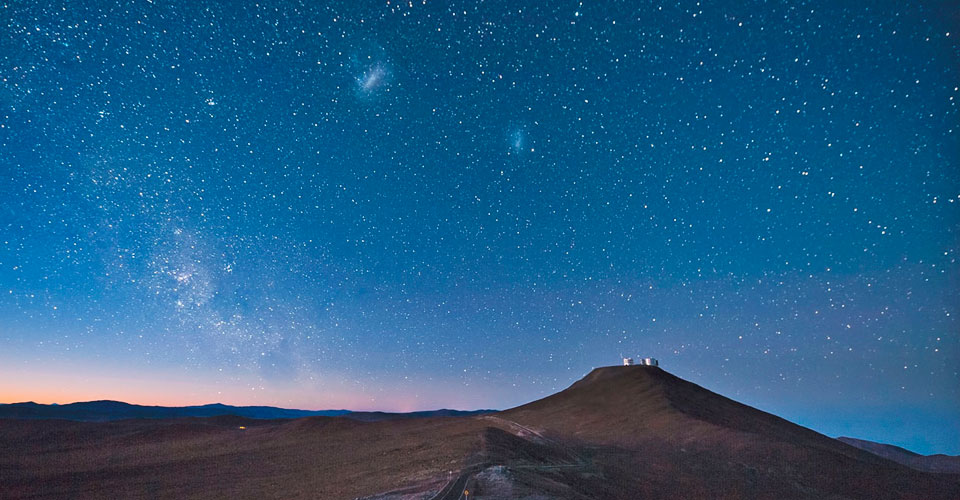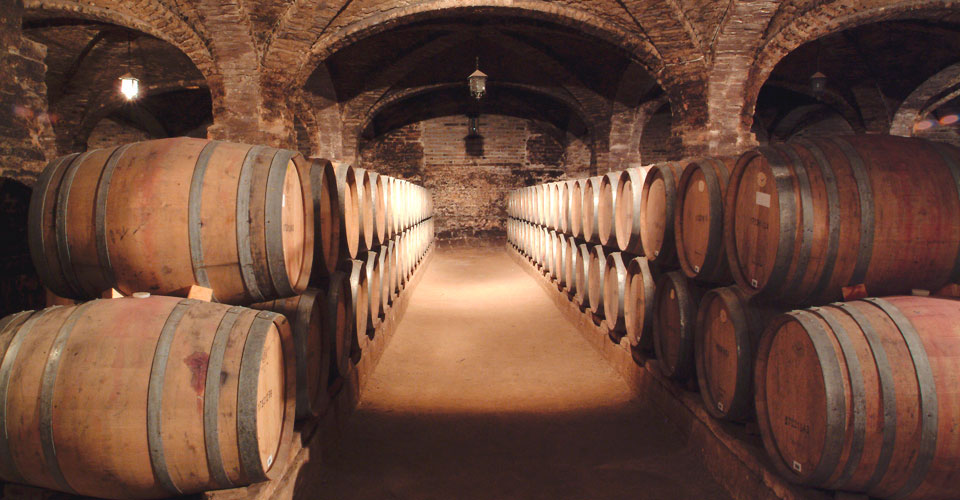Wine Route
The morphology of the Central Zone, located between two powerful forces of nature, The Andes Mountain Range and the Coastal Mountain Range, is intervened by many rivers which form fertile valleys. Thanks to the unique topography and climate of the country, these characteristics have given place to the elaboration of a wide variety of wines, of high quality, together with new technologies. The rich wine varieties found in Chile have acknowledged the country as one of the main wine exporters of the world.
Some varieties such as Cabernet Sauvignon, Carmenere, Syrah, Pinot Noir, Sauvignon Blanc or Chardonnay, are the high standards found in Chilean Vineyards. Its flavors have a subtle difference depending on the altitude in which they have been cultivated. You will experience aromas, flavors and body of exquisite wines, oriented by expert guides and/or sommeliers, hosts of the visits to wine cellars and vineyards. It is inspiring to watch from the view spots, vines the fields of vines, or taste the different varieties in thousands of underground wine cellars, or visit ancient patronal houses, truly historic treasures.
You can join this tasting crusade with horseback riding and taking bicycle rides in some of the vineyards.
1) Aconcagua Valley, with a touch of Rural Essence
Located eastern side of the Region of Valparaíso, at 80 kilometers to the north of Santiago, it is irrigated by the waters of the Aconcagua River.
Its highlights go are versatile, with valleys very relevant to the agriculture field, stockbreeding, and fruit farms, being the protagonist of very representative Creole parties that you will be able to witness, such as rodeos and foal taming.
San Felipe and Los Andes are two of the most representative regions of the valley, but along its whole extension you will find small towns rich in history and tradition, that will make your visit a unique experience.
Wine Varieties: Merlot, Cabernet Sauvignon, and Cabernet Franc (or emblematic Syrah)
Getting there: By car, you can take Ruta 57. From Valparaiso or Viña del Mar and by car, you can follow Ruta 60, to then cross the bridge of Puente del Rey.
2) Colchagua Valley: Wines and Traditions from the Chilean Countryside
Valle de Colchagua means "place of small lagoons", it has rich traditions and a very interesting culture. Historically it was part of the Inca Empire and lately it became the chosen place for the families of Chilean Oligarchy (powerful minority), to construct big mansions, some of them are still standing.
Its lands are bathed by waters of the Tinguiririca River, where the cities of San Fernando and Santa Cruz are located, two of the most important cities of the region. Also you will find other regions of of Tourist Interest such as Chimbarongo, Lolol, or Pichilemu.
If you visit this valley the true landmark of the place is the Ruta del Vino in Conchagua, which includes 13 wineries of red wines and white wines, internationally recognized for their excellent quality and the tours you can take to through vineyards and taste different wines. It is also worth mentioning that in this route you will find the very famously known "Tren del Vino" (Wine Train).
Close to these surrounding places, you can visit the Mimbre Handcraft Tradition in "Chimbarongo", or visit the beach of Pichilemu and maybe go surfing. At only 40 kilometers you will find Santa Cruz, where you can visit the Museum of Colchagua, with collections that reveal the history of this attractive region and also the history of Chile.
Wine Varieties: Cabernet Sauvignon, Carmenere, Syrah, and Malbec
Getting there: At only 191 km from Santiago, taking Ruta 5 Sur.
3) Casablanca Valley, the Kingdom of White Wine
At only 80 kilometers from Santiago, you will find the Casablanca Valley, famous in the region as Valle de Casablanca that owns its name to Santa Bárbara de Casablanca, the wife of the Spanish Monarch, Fernando VII. Since it is not a rich rainfall area, dams and reservoirs are constructed, which gave it a new blast of life. Nowadays it is one of the most important white wine producer valleys in the world which has made the wine tourism industry one of its strong points. You can go all over the many vineyards dedicated to white wine production.
For some years now, the region of Casablanca conducts the costumbrist party, which is celebrated on the first days of October and includes folkloric presentations with singers, typical food and touristic walks. Accessing this party celebration is free of charge.
Wine Varieties: Sauvignon Blanc, Chardonnay, Pinot Noir, Merlot, and Syrah.
Getting there: Taking "Ruta 68" to the west, the Casablanca valley is specifically located from the Zapata tunnel or "Túnel Zapata" to the Sanctuary of lo Vásquez.
4) Valley of Cachapoal, wines, handicrafts, and a lake
Known as the Rancagua Basin or "Cuenca de Rancagua", it gets its name by the river which bathes its lands and extends to Rapel lake. Located at 90 kilometers to the south of Santiago, the low altitude of the Coastal Mountain Range gives space for the production of red wines and special wines, turning it into a unique valley of the National Wine route.
The Rapel lake has transformed into an important interest point of the Region and the Valley. Made out of the tributaries of lakes Tinguiririca and Cachapoal, supported by a dam where you can do nautical sports. Other interesting part of the valley is, "Doñihue", a small area located 20 kilometers to the south east of Rancagua, highlighted by handcrafting tradition of "Chamantos" (blankets), sharing a great "Tradición Huasa" (rural tradition). The route offers guided visits and important cellars which produce wines of excellent quality, emphasizing its emblematic Chilean Wine variety known as Carmenére.
Wine Varieties: Chardonnay, Sauvignon Blanc, Merlot, Cabernet Sauvignon, Syrah, Carmenere and Malbec.
Getting there: Going to Lake Rapel: From Santiago you can take Rutas 78 and 66, in direction to Melipilla, dividing in the "Cruce de Las Arañas". From Rancagua, take the route to Doñihue and El Manzano.
5) Valle del Maipo, the Wine Valley
It is one of the most emblematic places of the Central Zone, it was specifically in this area, where the conquerors founded the first vineyards in Colonial Times, after being amazed by the favorable climate and agricultural richness. It is located in the Metropolitan Region, and follows the course of the river where this valley gets its name from, embracing in its skirts a large part of the urban landscape of the Capital.
Thanks to its topography, the valley allows the production varied wine production grown at different altitudes. Here you will be able to know varied vineyards accompanied by a glass of the best Chilean Wines, such as the Cabernet Sauvignon, which prestige was firstly born in this valley.
If you want to know a little more about this zone located at 40 kilometers southeast of Santiago, you will find Isla de Maipo, emphasized by its Creole tradition and rural essence.
Wine Varieties: Cabernet Sauvignon, Merlot, Carmenere, Syrah, Cabernet Franc y Malbec. White Wine Varieties include: Chardonnay, Sauvignon blanc, and Semillon.
Getting there: Santiago surroundings, Región Metropolitana de Chile.
6) The Maule valley, a combination of wine and nature
The Río Maule or Maule River is the valley with the biggest number of planted hectares in the country, highlighted in the national wine circuit or "Circuito de Vino Nacional". The first plantations where made during the time of La Colonia. Nowadays, the Maule Valley has a surface of three million hectares and includes the regions of Talca, Linares, and Cauquenes, making this valley in the region of the largest wine production industry in Chile.
Close to this region you will find the Altos del Lircay National Reserve, home to oak, Lenga and Coigue native forests. If you want to immerse a little bit into the history of the place, in Talca you will find the Bellas Artes de Talca Museum, located in the center of Plaza de Armas, where you will find Chile's Declaration of Independence, a bicentennial document of great patrimonial value.
Wine Varieties: Cabernet Sauvignon, Carmenere, Merlot, and Malbec. Getting there: at only 260 kilometers from Santiago, through highway 5 Sur.
Grape Harves
Between March and April, the valleys are dressed in their best elegant clothes and offer happy parties and celebrations for the harvesting of the vines. Enjoy the tastings, and special wine-tasting process, handcrafting exhibitions, traditional gastronomy, Cueca (national folkloric dance) contests for children and adults, taming of foals, and the elections of the queen of the Grape Harvest. This is an experience that cannot be missed!
Wine Train
Exiting San Fernando, at 140 kilometers to the south of Santiago, you can arrive to Santa Cruz. During the tour you can choose to taste a wide variety of wines 8white and red), accompanied by an abundant fine cheese tasting of the region. Tour outings are arranged for Sundays at 10:30 AM. It is necessary to make a previous reservation.





